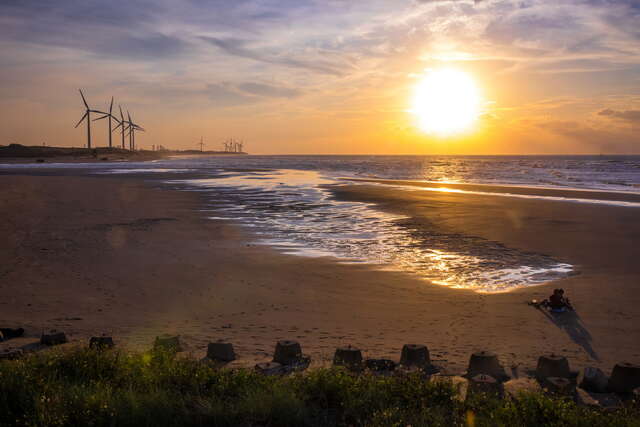Hsiu-Tsa Port Wetland Introduction
Following the Western Coastal Highway and passing by Zhuwei Fishing Port, heading south to explore the coastal paradise where the Laojie River and the Shuangxi River converge, the sea is beautiful, the sky is blue, and the Black Drongo flies elegantly. The mudskippers blink curiously, while time moves gently like the windmills by the shore. Originally an abandoned military camp, Xucuo Harbor has become a prime location for migratory birds due to its developed river system and favorable estuarine terrain. Covering an area of 961 hectares and stretching 10.5 kilometers, it has been designated as "Important Wetland (National Level)" by the Ministry of the Interior. Aside from the bike paths and mangrove boardwalks, there are hardly any artificial facilities, which may seem unimpressive at first glance, but it actually hides many "national treasures" with its rich primitive ecology, offering different surprises with each visit! Xucuo Harbor Wetland, recognized as an important habitat for wild birds by BirdLife International, sees a significant influx of birdwatchers from October to May of the following year, all eager to encounter migratory birds such as the Black-faced Spoonbill, Great Egret, Black-tailed Gull, and Little Tern. The wetland, featuring intertidal zones, windbreak forests, fish ponds, and rice fields, serves as a major stopover for migratory birds during their mass southward migration. Currently, more than 200 bird species have been observed here, accounting for about 41% of the 560 species found in Taiwan. Birds forage and rest here, composing a serene ecological landscape. Binoculars, single-lens reflex cameras, a non-disturbing attitude, and a leisurely pace are essential for birdwatching. Xucuo Harbor Wetland is not only one of the best habitats for wild birds in Taoyuan, but also a natural classroom to appreciate the beauty of intertidal ecology. Here, one can find hundreds of plant species, including Taiwan's bulrushes, camphor trees, and Ma'an vines, as well as amphibians like the Ponds Frog and Taiwan Black-spotted Frog, along with numerous endemic species.







































